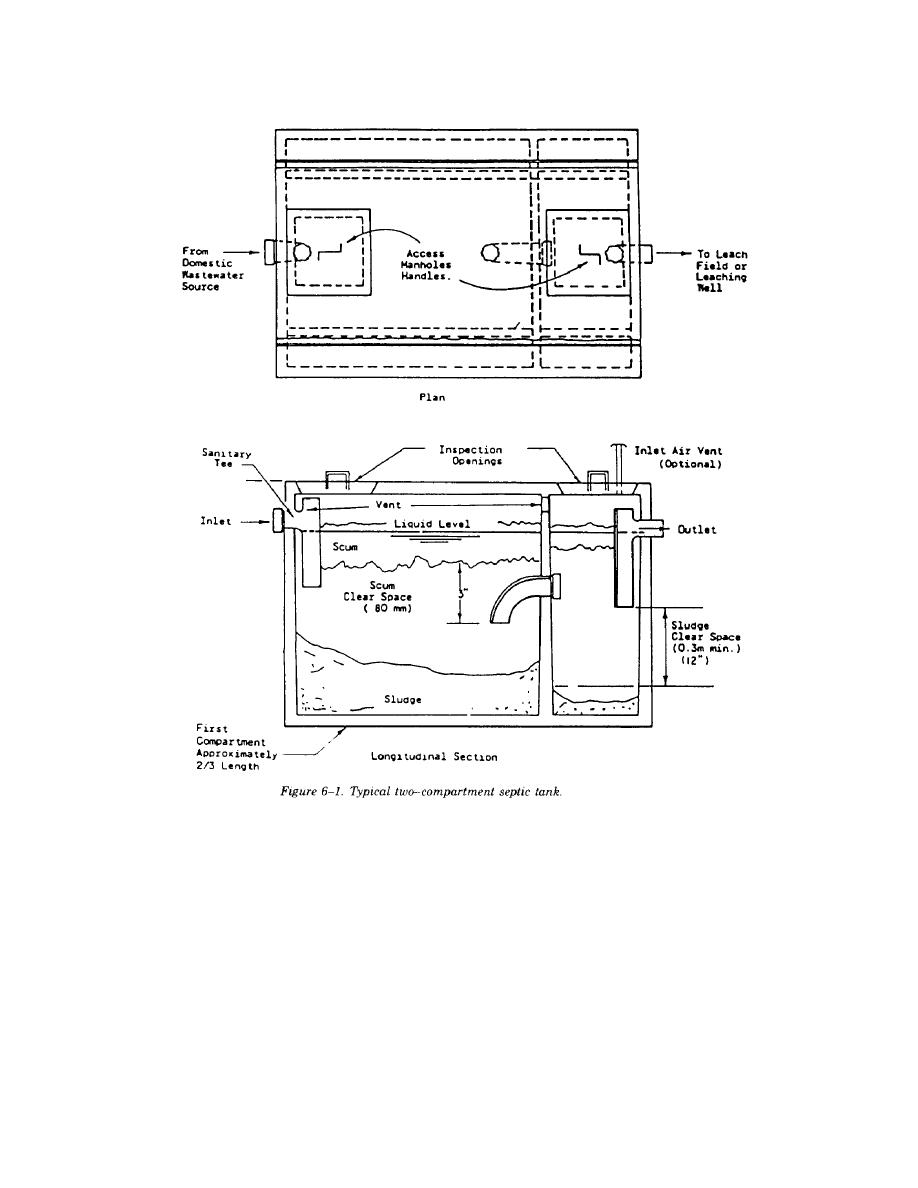
TM 5-814-3/AFM 88-11, Volume III
a. Subsurface absorption. Subsurface absorption can be used in conjunction with septic tank treatment
when soil conditions permit. Percolation tests must be performed as required by the U.S. Public Health
Service, and the groundwater table at the highest known or anticipated level must not reach any higher than
2 feet below the invert of the lowest distribution line. Absorption fields normally consist of open-joint or
perforated distribution pipe laid in trenches 1 to 5 feet deep and 1 to 3 feet wide. The bottoms of the trenches
are filled with a minimum of 6 inches of to 2-inch rock or gravel (fig 6-2). The perforated distribution
pipe is laid on top of this rock, and the open joints between pipe lengths are covered to prevent clogging.
More rock is placed carefully over the pipe network, and then a semipermeable membrane is used over the
rock layer to prevent fine-grained backfill from clogging the drainage zone. Distribution pipe may be spaced
as close as 2 feet if the rock beneath is deep, the subsoil porous, and distance to bedrock greater than 4 feet.
Generally, distribution pipelines are 3 to 6 feet apart laterally and are no longer than 100 feet. Consult EPA
625/1-80-012 for complete details and leach field special design information. Minimum depth of trench will
be 18 inches, with 12 inches of backfill. Invert slopes will be 0.3 percent when dosing tanks are used and 0.5
percent when not used. Soil absorption systems will be 100 feet from water supply wells, 50 feet from
6-2


 Previous Page
Previous Page
